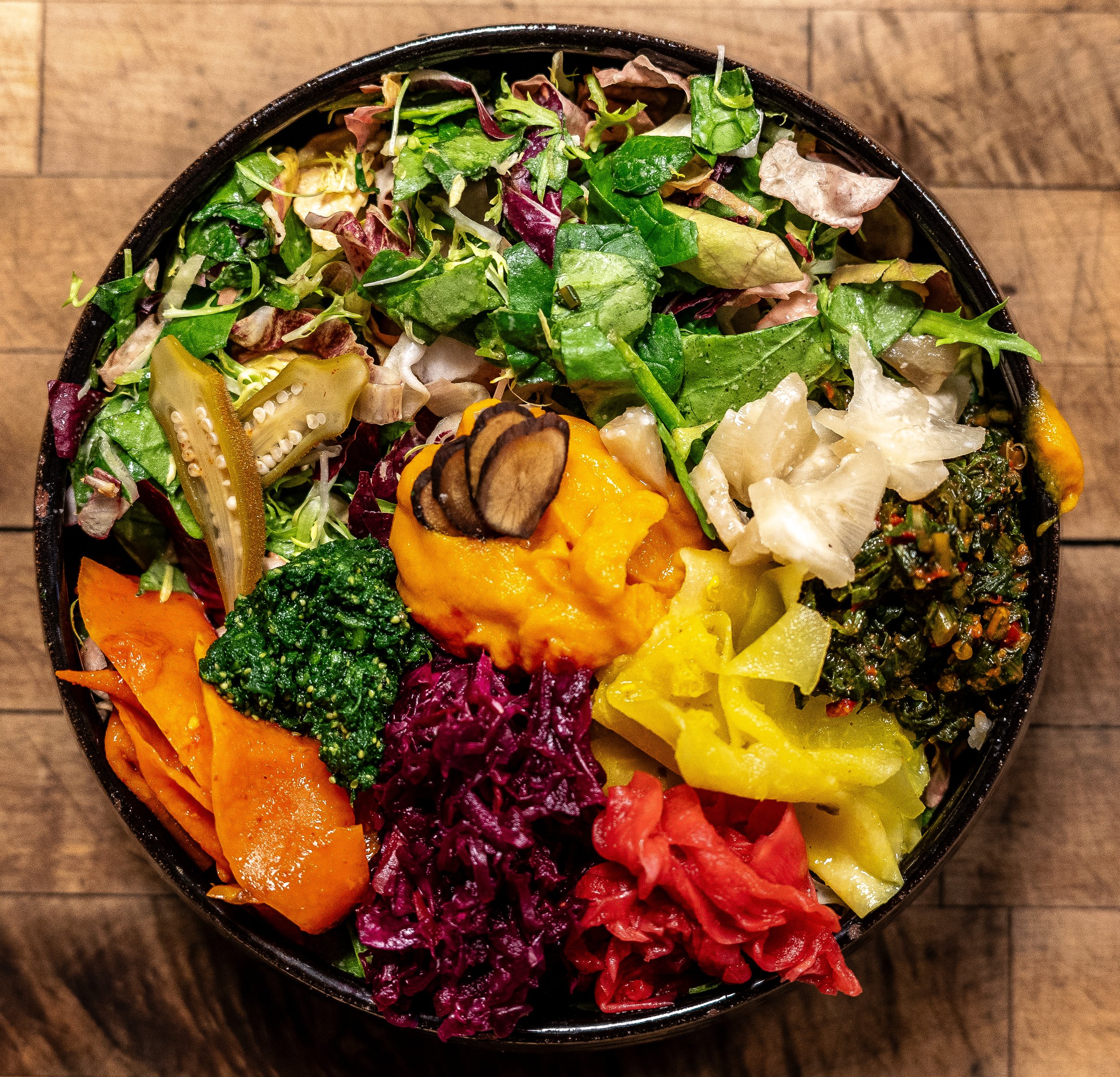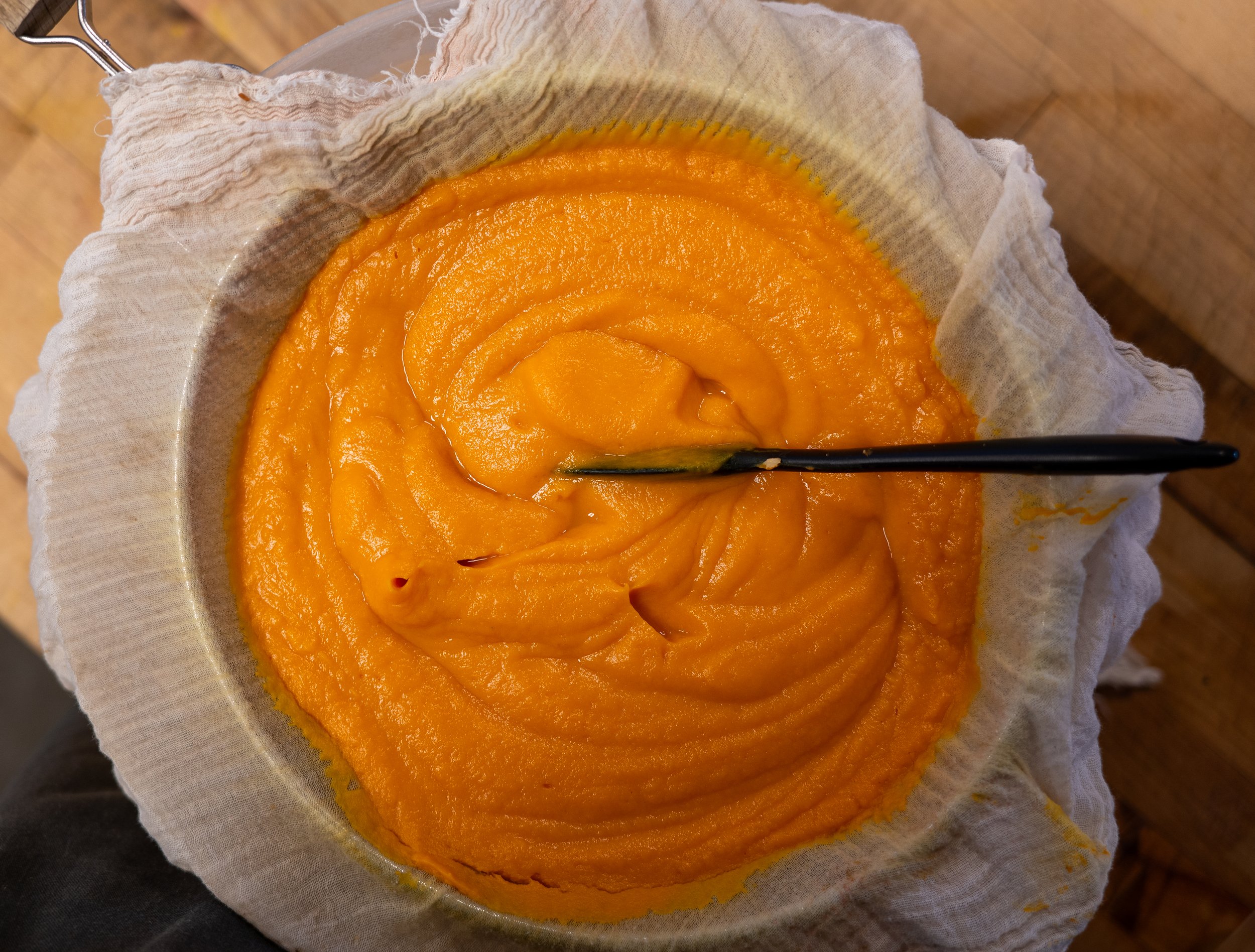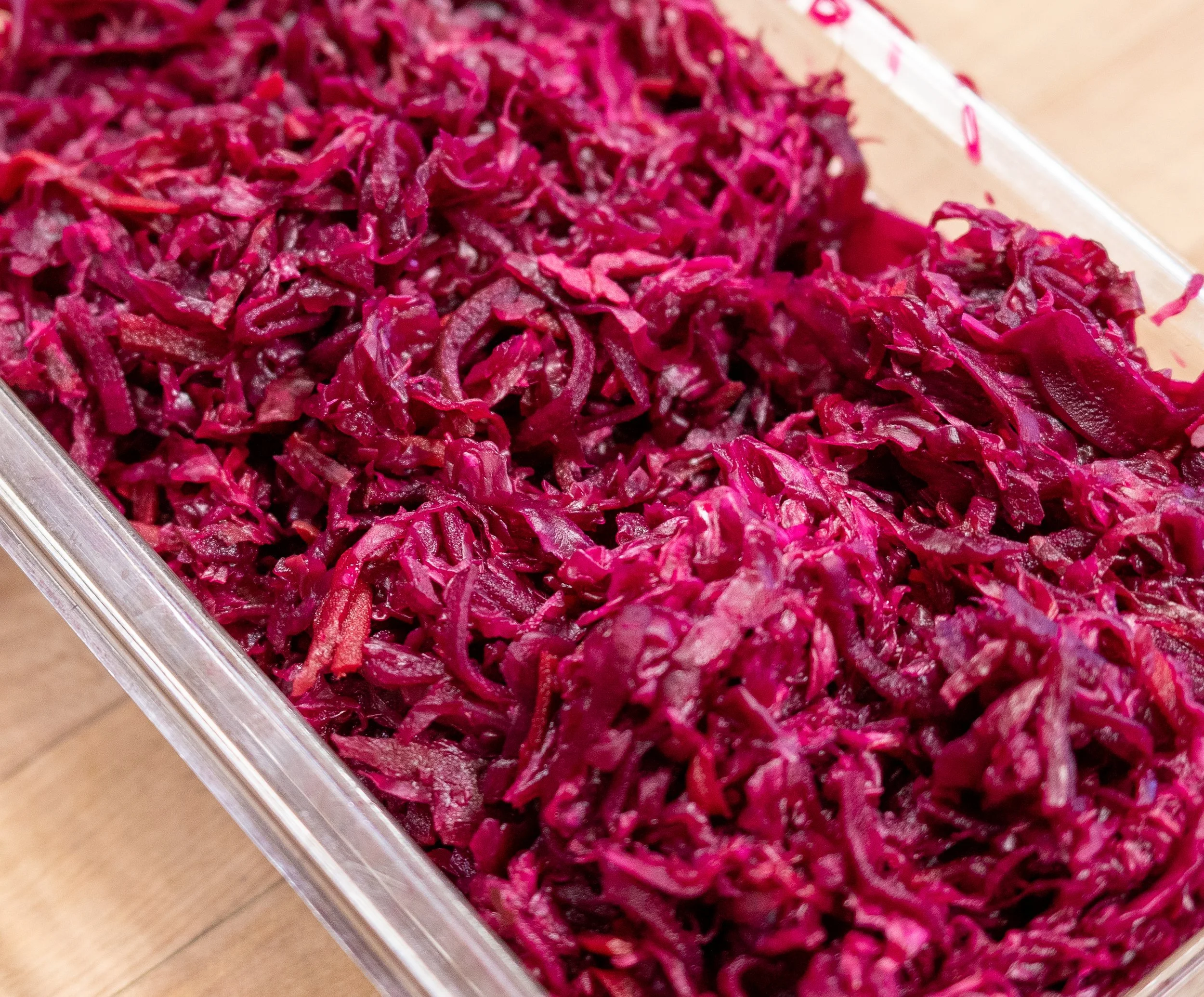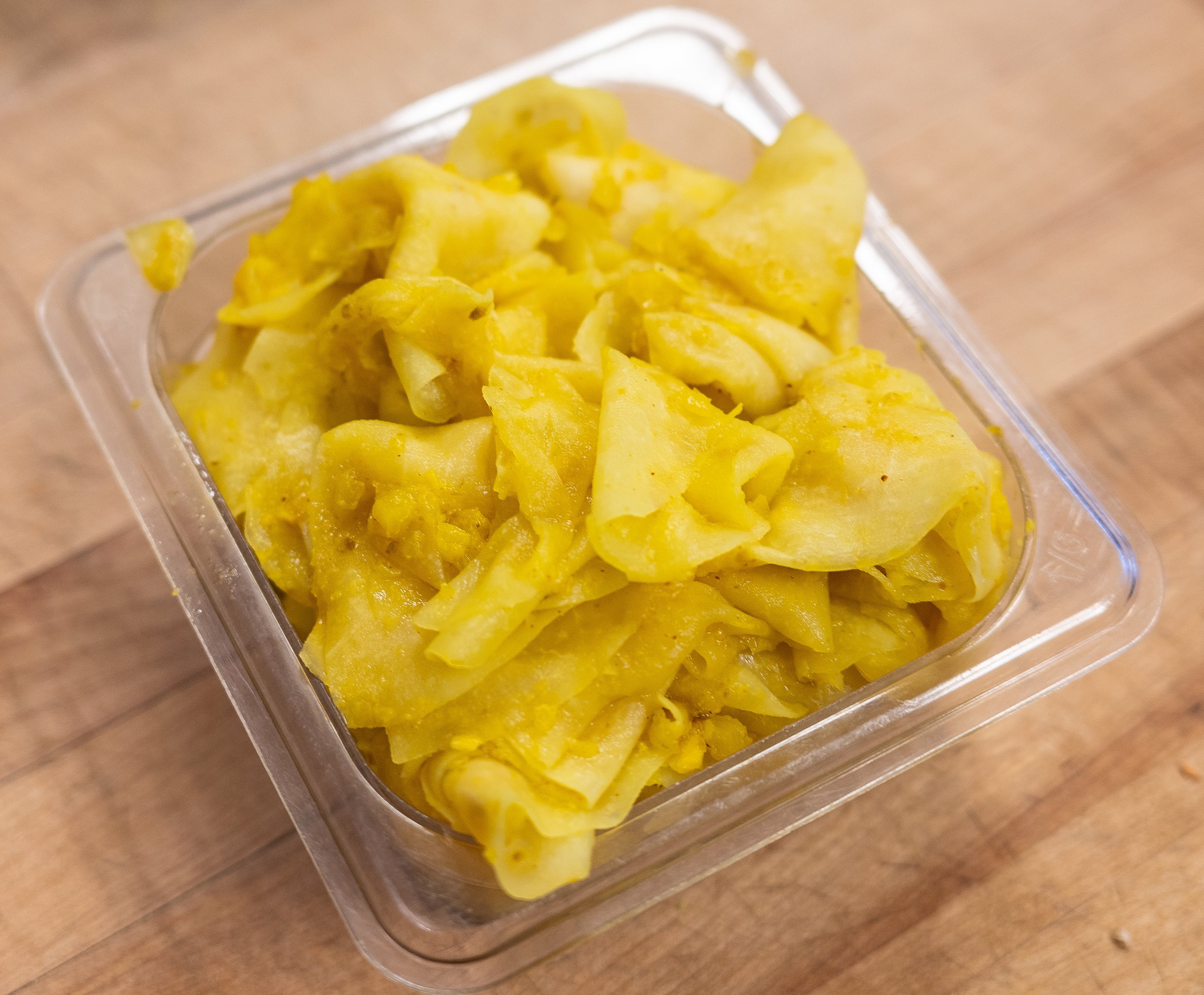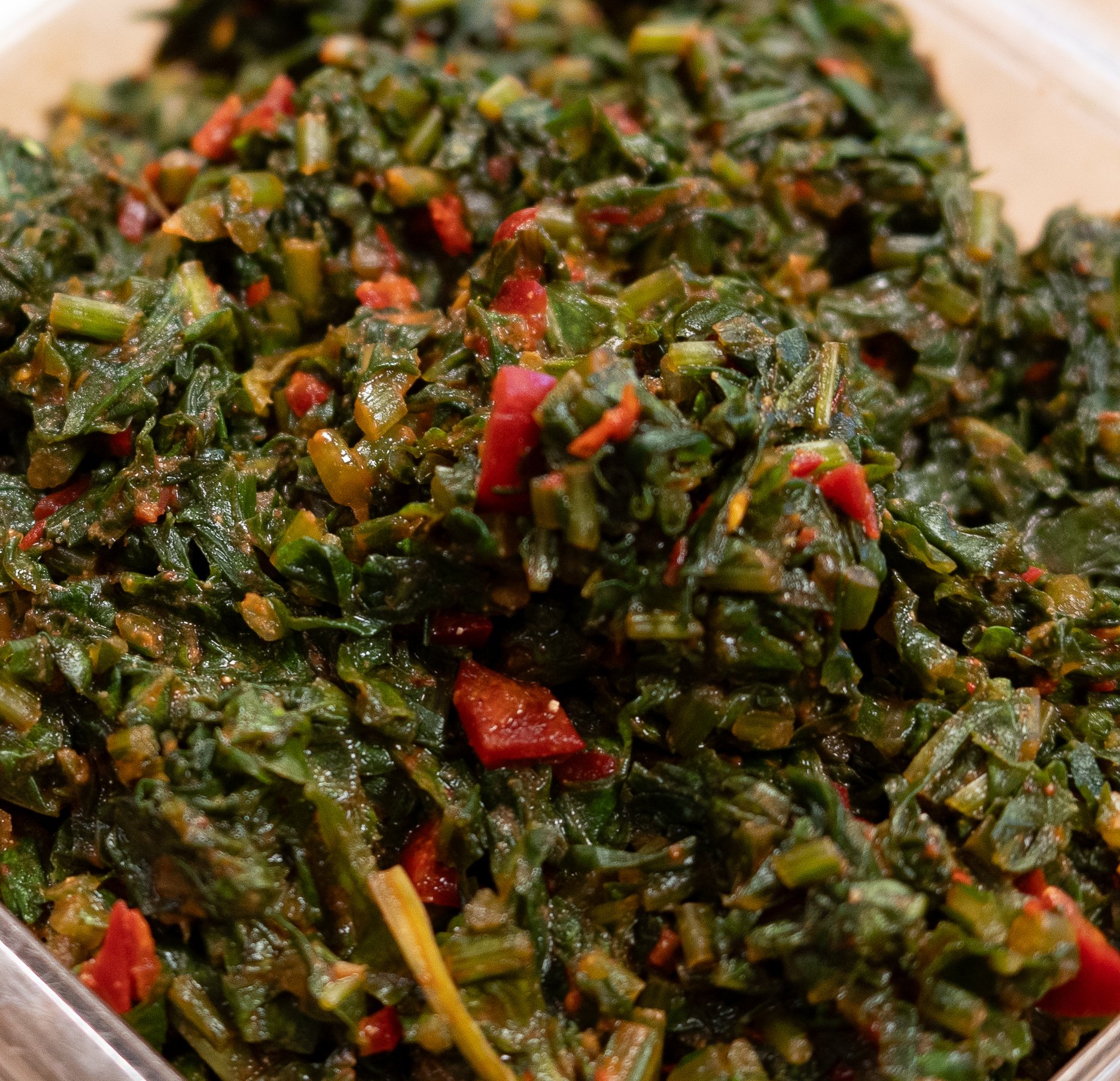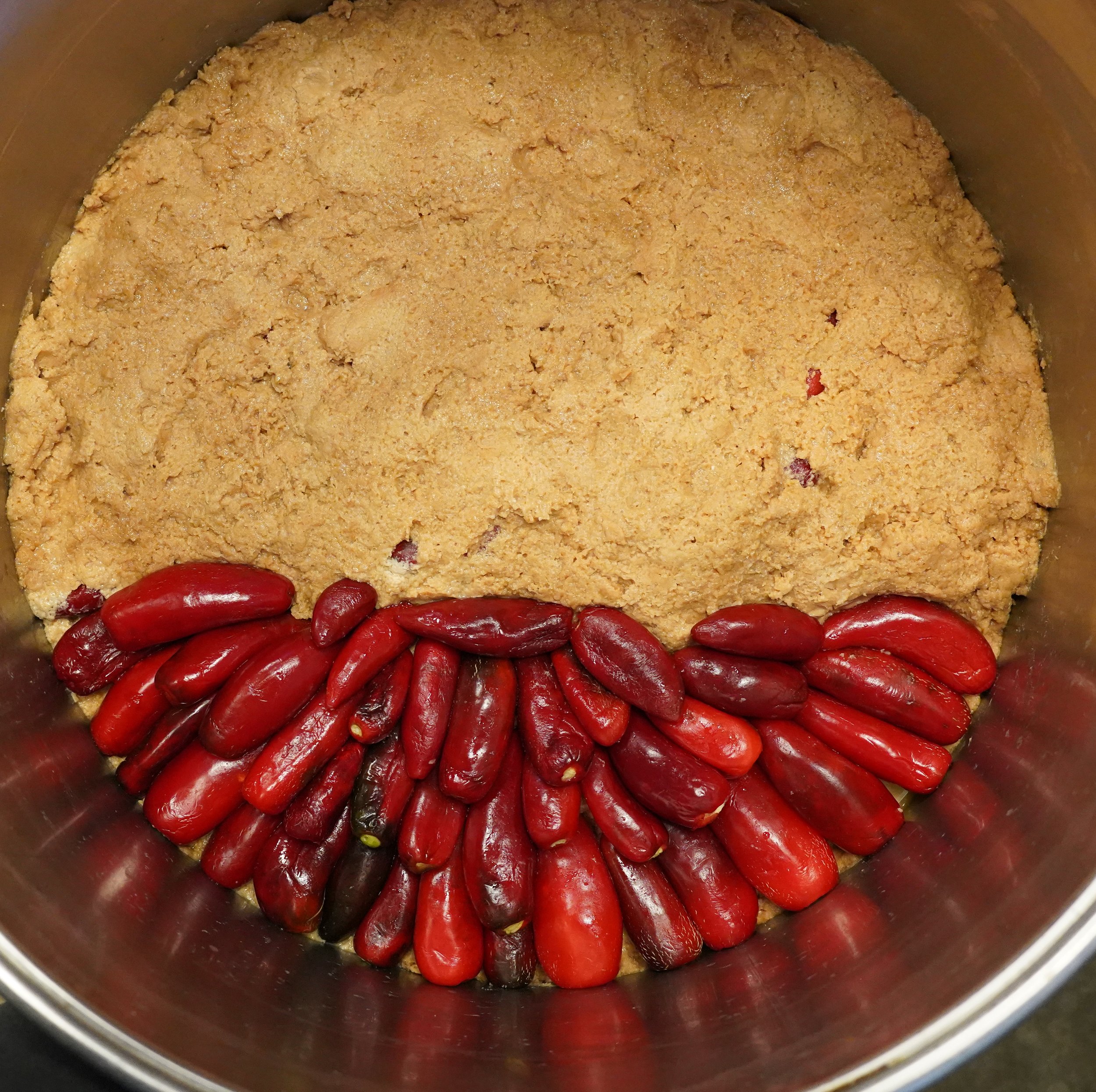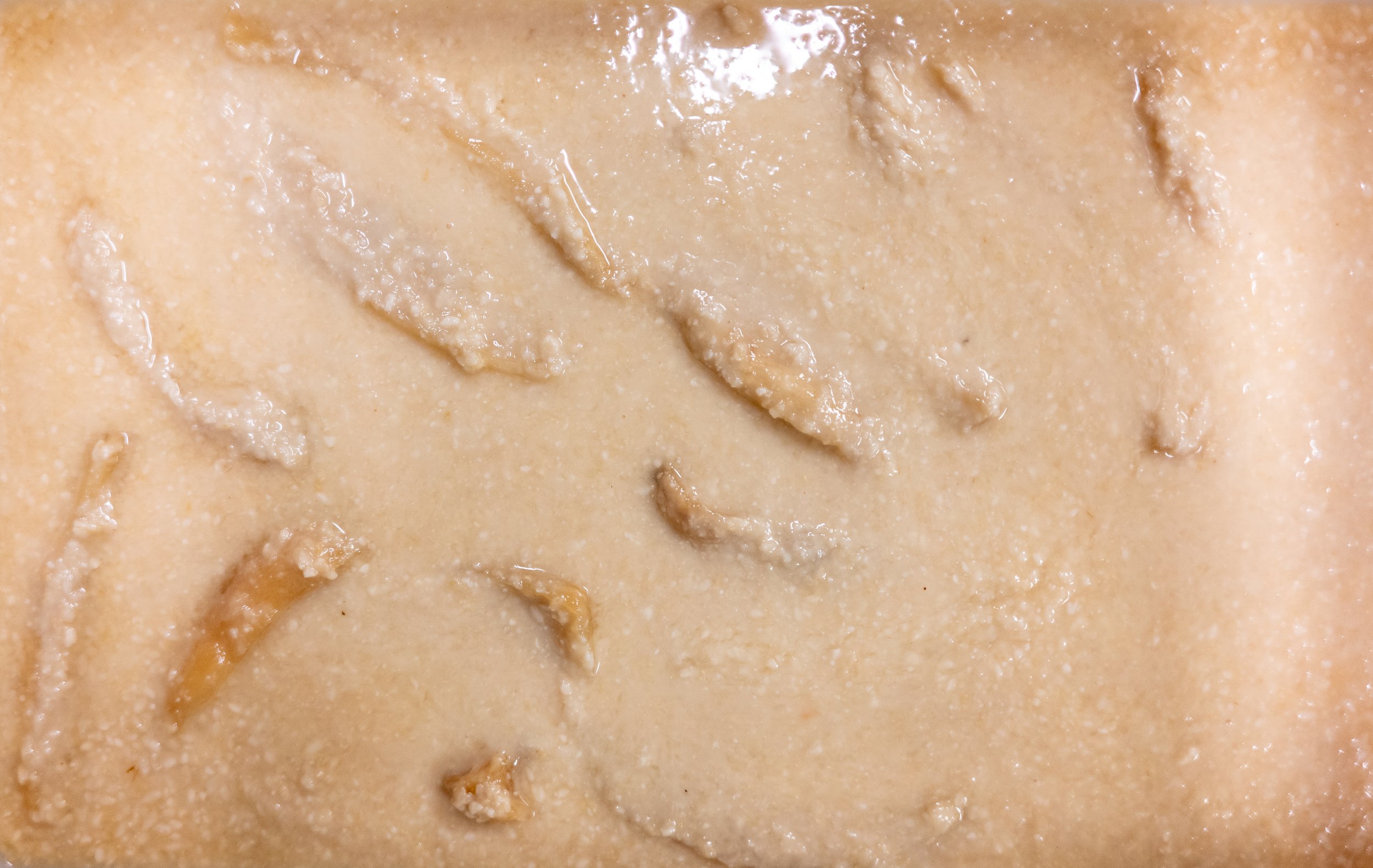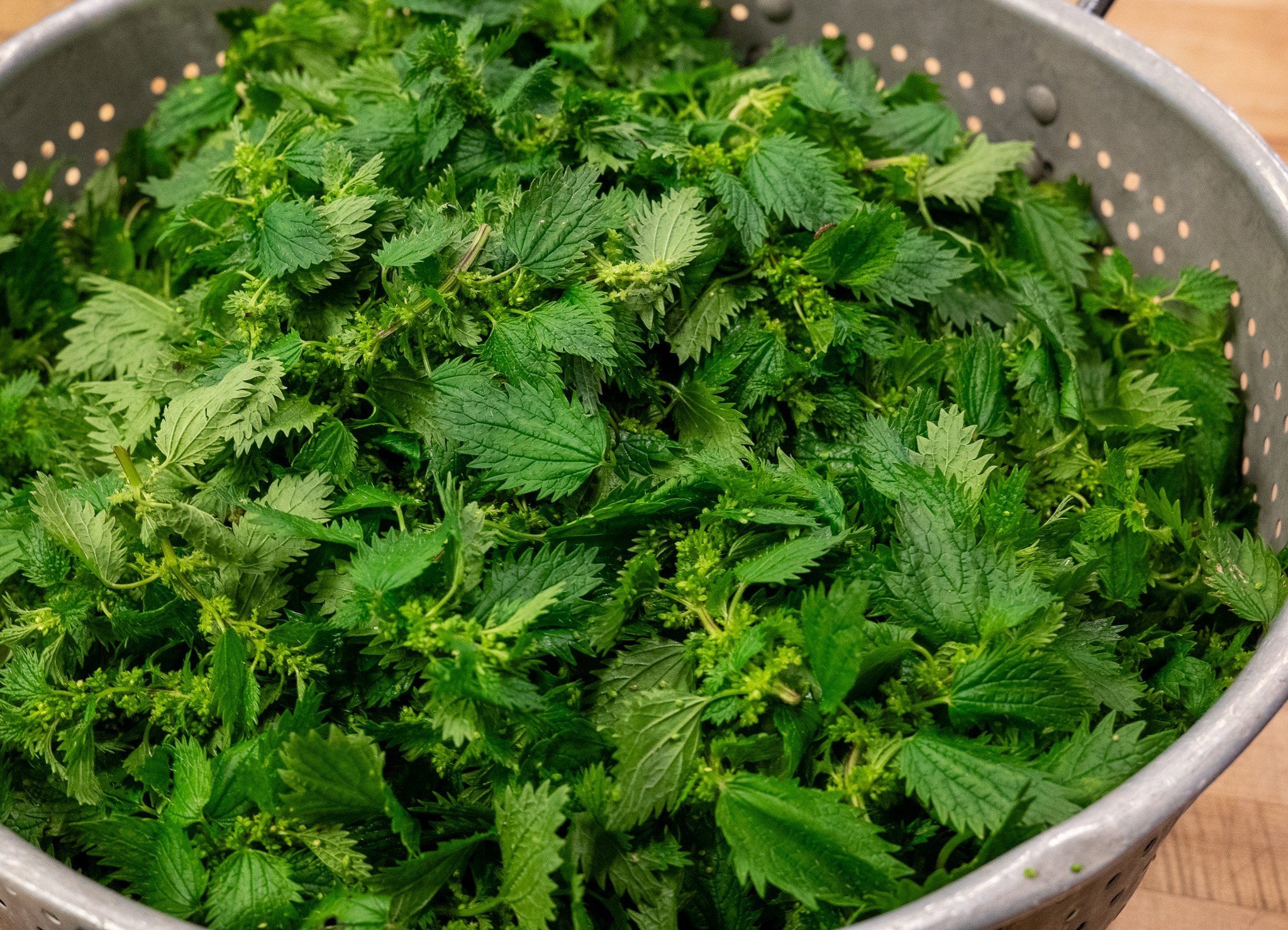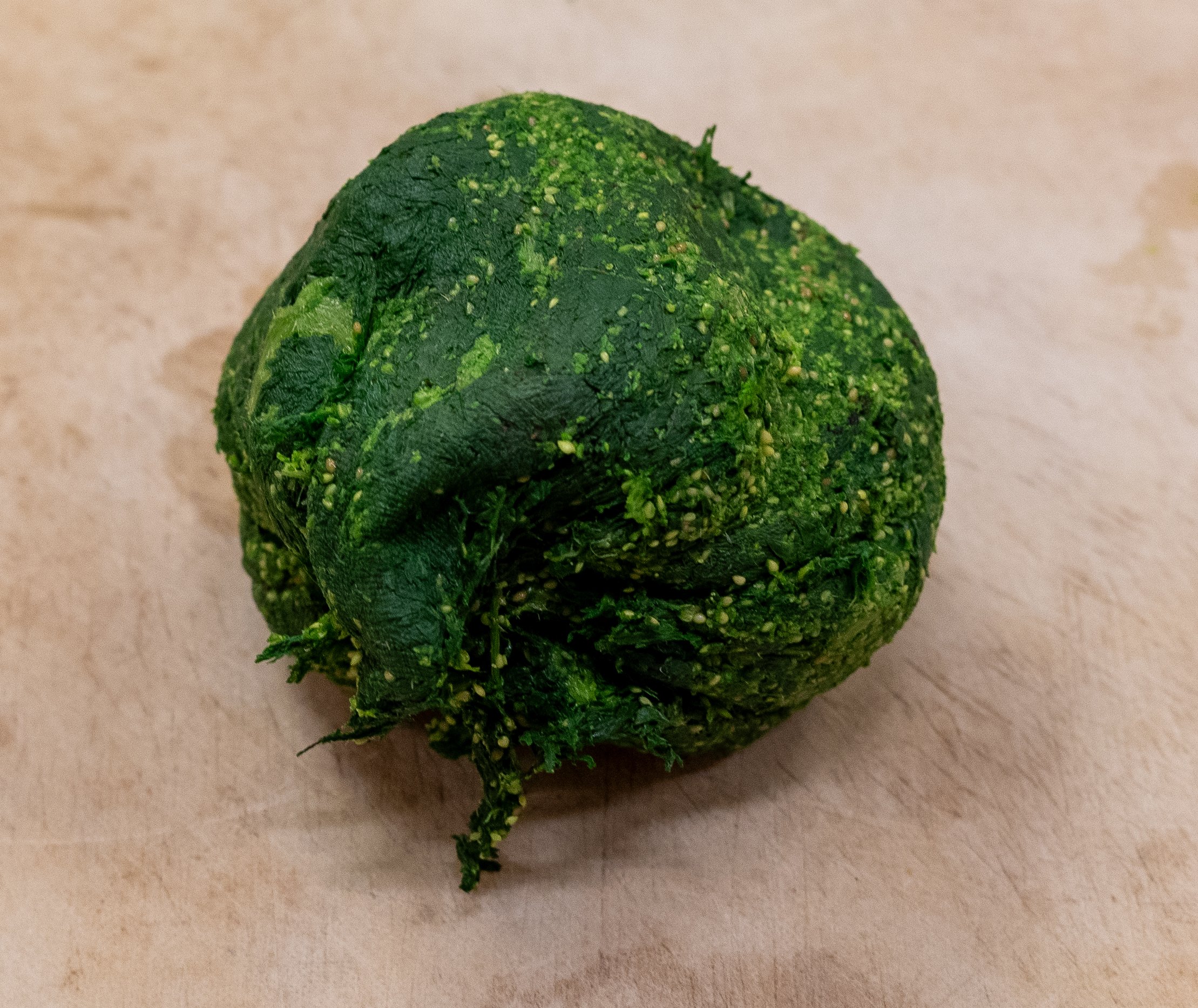Rice & Pickles January 13 & 14
Menu
When you Dine in with us everything from the Dashi to the Sweet Bite is included in the meal. So, the only decisions you’ll need to make are the additions. We have Goma Dofu, which translates to Sesame Tofu. Goma Dofu is not a true tofu, in that there is no soy in it. It is made entirely out of Sesame Seeds, which are toasted, ground, pureed with some Dashi, and then heated with Kudzu Root. Kudzu Root is a root starch that acts as a binder and it lends a texture to the finished product that is similar to a silken tofu, which is where it gets its name. We also have avocado. The avocados this week are Bacons grown by Step Ladder Farm and they are topped with Garlic fermented with Koji and Nukazuke Carrots- carrots fermented in rice bran overnight. We also offer a cured egg. We make the eggs every Wednesday. They are a six-and-a-half minute egg that we marinate in a mixture of tamari, and shiso vinegar, which is a shiso kombucha that has gone to acetic, or vinegary, to use a beverage but the shiso flavors are still nice and clean, so we long age it into a mild vinegar mix it with the tamari and sake lees from last years Jalapeno ferment.
Goma Dofu
Goma Dofu
Goma Dofu
We always begin the bowl with a 50/50 blend of short-grain brown and sweet brown rice, sticky or glutinous brown rice, grown by the Lundberg Family here in California. We top the rice with a gomashio or sesame salt. Our take on this traditional Japanese toasted sesame and salt condiment is that instead of using salt we use either one of our ferments that we have dried and powdered or we use seaweed. Today we have toasted sesame seeds, dried and powdered leek tops give it its green color and we use Sea Lettuce instead of salt.
Rice cooked in Donabe
In the center of the bowl, we have carrots that are steamed, pureed, and seasoned with our Sweet White Miso. At the bottom center of the bowl is a sauerkraut made from green cabbage, beets, carrots, and ginger, which we call our Super Sauerkraut Salad. To the right of the sauerkraut we have kohlrabi. The kohlrabi was shaved on the mandoline and mixed with our Indian Pickled Limes, which is an 11-month fermentation of limes. They are our version of an Indian achar, like the mango pickle that you might get on the side of your dosa. The limes are minced and mixed with the shaved kohlrabi and left to sit for a few days. Just under that, we have scarlet queen turnips that were pickled this week in the brine from our Umeboshi plums. Continuing to the right we have turnip greens that were mixed this week with kasuzuke jalapeno which is a one-year fermentation of jalapenos in sake lees. Takari Sake, one of the larger sake producers in our region, is just a few blocks from The Shop. We essentially tap into their waste stream, we get the byproduct from their fermentation which is a paste of rice, rice koji, and yeast. We take that paste, called kasu or sake kasu, and we add sugar to it, to feed the yeast that is still living in it, we add salt to it, to moderate the fermentation and for texture preservation, and then we bury vegetables, such as the jalapenos, in it for 12-18 months to make a pickle known as kasuzuke, meaning pickled in kasu. This week we minced our 2022 jalapenos and mixed them with the turnip greens, letting them marinate for a few days. On top of the turnip greens, the white pickle, is Daikon radish. A couple of weeks ago we made a mash made from rice, rice koji, and barley shochu, we put dried and salted daikon in the mash and left to ferment to make the pickle known as bettarazuke.
On the other side of the bowl, to the left of the sauerkraut, we have a kimchi of pumpkin. On top of that we have nettles that were blanched, minced, and marinated in our miso tamiar which is the liquid that rises to the top of the vessel during our sweet white miso production. We also have okra fermented in a brine with garlic and chile.
On top of the puree, we add a few chips of kasuzuke burdock, a 12-month ferment of burdock root. The green today is a mix of frisee, radicchio, and spinach. They are dressed with a fermented lime rind or a kosho. Kosho is traditionally made with yuzu rind. We make ours with a variety of California citrus. Last year we received some beautiful yellow-skinned Bearss Limes. We juiced the limes for kombucha but before juicing we removed the rind, pureed with salt, and fermented it for a couple of weeks. We then took that fermented citrus paste and thinned it out with some olive oil and lime juice to make a salad dressing. Finally, we top the bowl with scallion. The scallion was rubbed with a paste we make from dates, tamari, and the brine from our chile paste and dehydrated to make it crispy
Burdock Kasuzuke
Frisee, Radicchio & Spinach with a Lime Kosho Dressing
